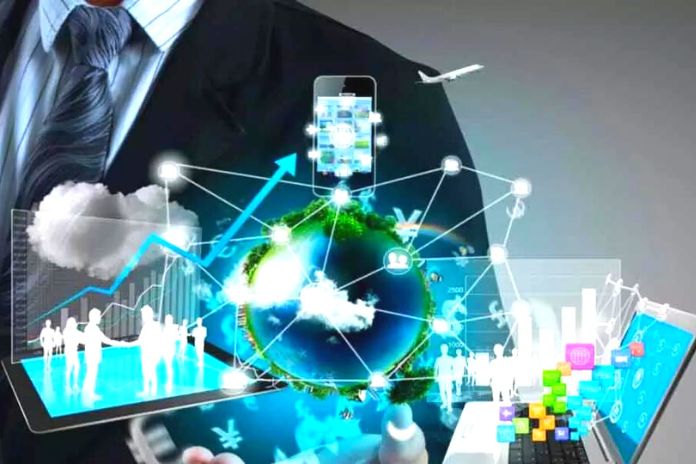Technological Revolution: Future definitions have been updated successfully! Our reality has never changed as fast as it is now. Furthermore, the keyword of this new era could very well be TECHNOLOGY.
It is impossible to talk about business without converging on the infinite possibilities of tools and strategies that the technological revolution has brought, but… Are we ready to live in this new world?
Do you know how technology has been used to impact real businesses? Need insights on how to apply this to your field? We decided to start this conversation and bring a series of free content about current technological concepts and how they can be applied to the business world.
Has it ever happened that you are somewhere talking to your colleagues about a topic that is not usual, and the next day, you start to receive advertising material on your social networks or email?
How Do They Know What You Were Thinking Or Talking About?
The name of this is Big Data; this exponential volume of data is everywhere, and that can be captured and analyzed very effectively by companies from the most varied sectors.
The truth is that data is recognized today as the new oil. In what sense? Mining, processing, searching for reports, and getting information from that data make marketing strategies much more effective.
Big Data is a way for you to capture and store this large volume of data. But these data alone do nothing. We need some strategy or some technology to help us. Machine Learning is one of them.
But How Does This Work In Practice?
A competent data professional can predict situations and understand micro changes in behavior based on these collected data.
The main objective of machine learning is for the computer to learn by itself or with as little human intervention as possible. And there’s more; machine learning is an aspect of Artificial Intelligence.
Yes, the subject is extensive, and this was just the beginning of the web series about new technologies related to business.
A web series with four episodes that cover terms such as Data Intelligence, Gamification, Cybersecurity, and Digital Marketing in a chat with experts and professors in the area.
Gamification is the application of game strategies in day-to-day activities to increase participant engagement. It is based on game thinking, a concept that encompasses the integration of gamification with other knowledge from the corporate environment and design.
Examples Of Gamification In Education
Once you know the benefits, it’s time to put gamification into practice in schools – and the process is more straightforward than it sounds! Check out some activities that can be included in the pedagogical plan:
Gamify Reading
The activity is based on the accumulation of points. Each student reads a book for a month and shares what they learned with the class. Students must present the story in a review, video, or play. Each format accumulates several points. The more books read and shared, the more points the student earns. At the end of the month, the winner gets a reward.
Creating Educational Games
The proposal is for students to create games throughout the year related to the content of different subjects, such as history, geography, science, and mathematics. Divide the class into teams, create a schedule, and separate game development into stages.
At the end of the school year, the group of students with the best-developed project will be awarded. One award idea is for professionals to play the game and use it for all classes in the school.
Gamification Of Class Participation
This activity is based on the organization of a teacher ranking based on educational games. Every class participation results in a score; students who miss or do not interact with the content do not score. At the end of each month, students with the highest scores earn a reward.
Also Read: Future Of Work: Discover The Leading Trends!












